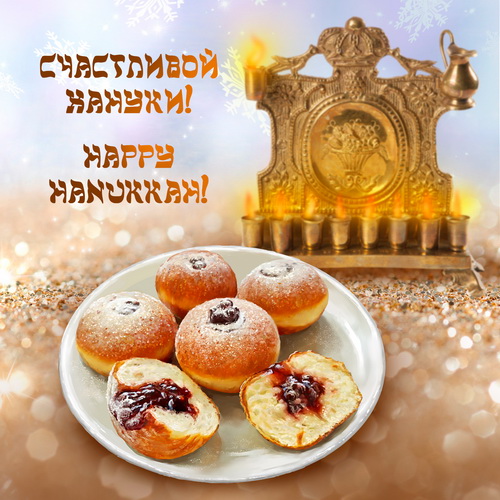


Happy Hanukkah
The festival of Hanukkah is observed in winter as a commemoration of the victory of the Maccabees over the Seleucid Greeks, the expulsion of the latter from the Jerusalem Temple, and the restoration of Temple service. According to legend only one vessel of specially consecrated olive oil was found in the Temple upon its recapture. This was enough to keep the Eternal Light burning only for one day. However, the Talmud relates, a miracle occurred: the oil in this one small vessel burned for a full eight days, allowing enough time for the preparation of more oil. Hanukkah is celebrated over the course of eight days, the time frame of this miracle.
During Hanukkah a ritual candelabrum, called in Hebrew a hanukiyah, is lit in honour of the holiday. This Hanukkah lamp provides space for eight small oil lamps or candles, plus an additional one known as the ‘servant’ (shamash). The shamash is used to light the others in sequence during the eight days of the festival.
Hanukkah lamps are one of the most popular forms of Jewish artistic craftsmanship. Their designs, appearances, and materials vary extremely widely. Very often architectural motifs or vegetational ornamentations appear together with depictions of lions, deer, and birds in the decorative programmes of these lamps.
Traditionally at Hanukkah children play for money or sweets with a spinning top (called in Yiddish a dreydl, or in Hebrew sevivon). The four sides of the top are engraved with the initials of a Hebrew phrase denoting the Hanukkah miracle.

